Soft PVC glazing
Soft windows are a great option for those who do not want to spend money on double-glazed windows for a gazebo.
- Transparent PVC sheets help maintain a comfortable temperature in the room and protect against drafts.
- They let light through well, but do not let dust and insects through.
- Manufacturers guarantee a ten-year service life with simple care (just wipe them with soapy water).
- Soft windows are universal, so they will fit into any landscape design.
- The material does not stretch and is not afraid of low temperatures.
Special straps are included with the windows: they allow you to install PVC sheets with your own hands. To close the gazebo from the sides, it is necessary to equip the window frame with eyelets that will allow you to securely fix the products. If necessary, they can be rolled into a roller. There are also devices with magnets and zippers.
The main disadvantage of PVC windows is creases that can occur on low-quality film. It is worth noting that the thicker the material, the more reliably it closes the gazebo from rain and wind.

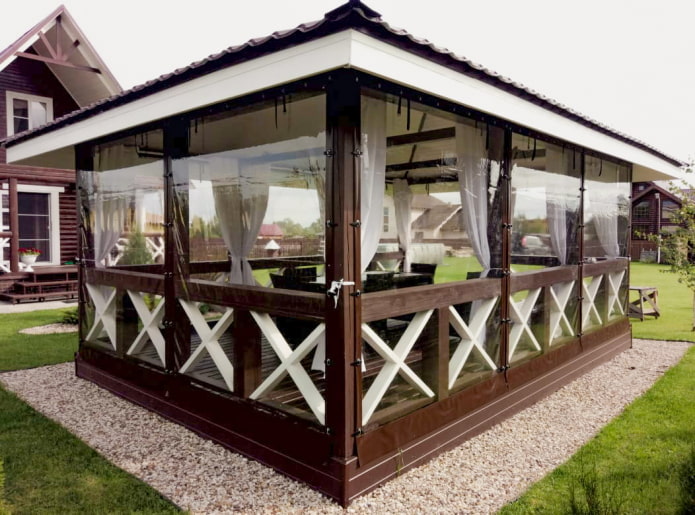
Frameless glazing
The basis of the frameless glazing system is aluminum horizontal profiles, which are installed at the bottom (on the floor or parapet) and under the roof. Tempered glass is inserted into them, which is designed for high mechanical loads.
- Such glazing provides a panoramic view from the building, and also protects from wind and rain.
- Due to the glass, the gazebo looks spacious and airy, protects from noise and dust.
- Sliding doors can be moved at your discretion: in bad weather, it is easy to close the gazebo from bad weather, and on a hot day – open it for ventilation.
- The glass can be tinted – this will add coziness and privacy.
The disadvantages of frameless glazing include its high price, careful preparation of the support, as well as a fairly high level of heat loss.
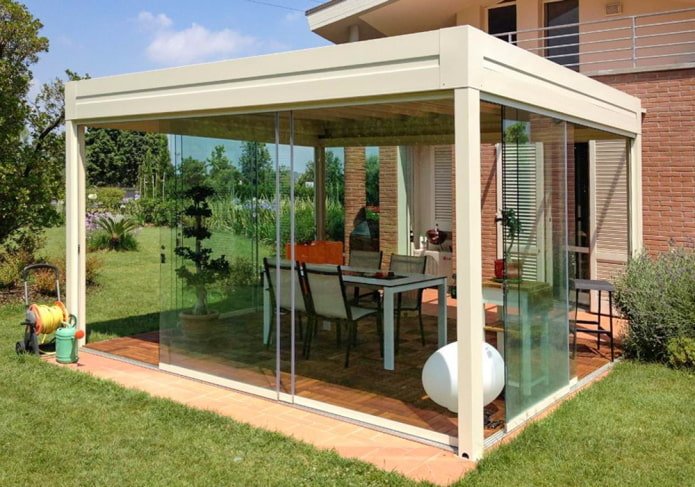
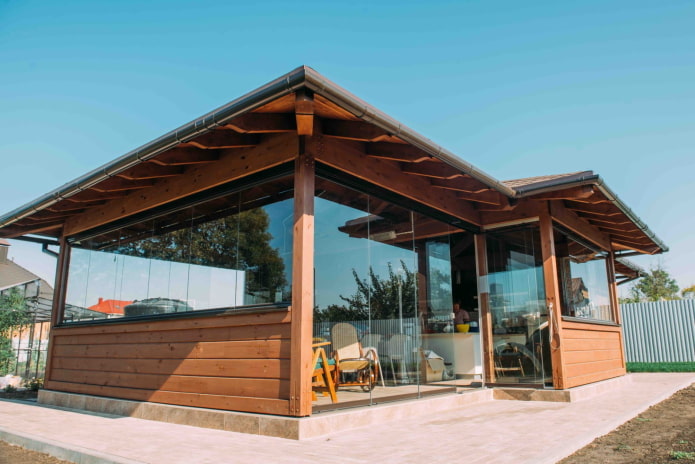
Fabric or tarpaulin curtains
If the structure is open and glazing is difficult, you can close the openings in the gazebo with thick fabric – curtains. A special sun protection material or durable tarpaulin will do, which will protect not only from rain, snow and wind, but also from insects.
There are both regular curtains, which serve more of a decorative function, and more practical roller blinds. If the structure is used only in the warm season, you can use tulle or an inexpensive mosquito net: they will provide privacy and prevent mosquitoes from flying inside.
The disadvantage of this option is high thermal conductivity, so curtains can only be used in the summer, removing them for the winter. If you do not secure the curtains at the bottom, then in bad weather gusts of wind will cause great discomfort to those inside.
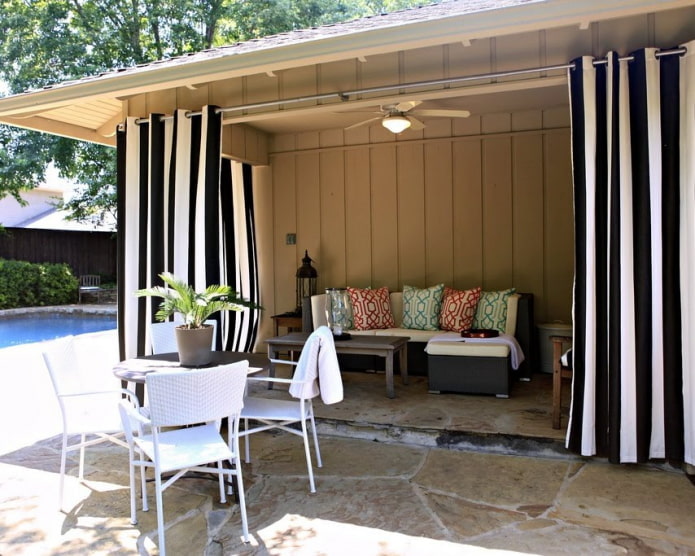
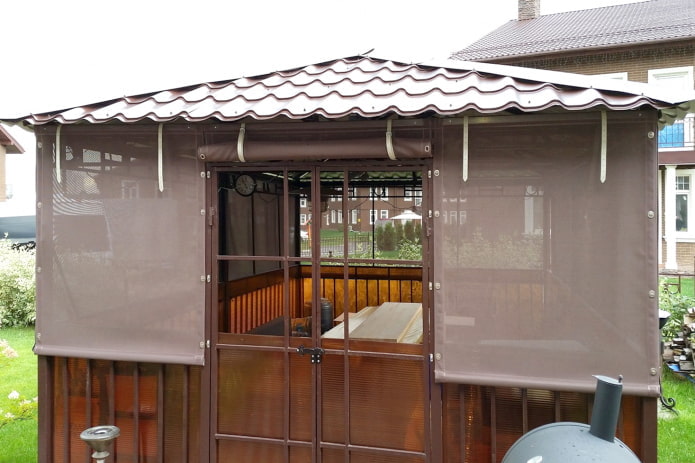
Roller blinds made of bamboo
If you want to cover the windows in the gazebo with an environmentally friendly, natural material, products made of reed or bamboo will do. This is not the most reliable option for protection from insects and bad weather, but the curtains will cope with the sun’s rays perfectly.
Canvases made of natural materials are suitable for summer recreation, but do not protect from moisture, wind and snow.
Bamboo curtains for a gazebo should be chosen if the structure is made of wood: this way you will emphasize the unity with nature and fit the structure into the design of the garden and vegetable garden.
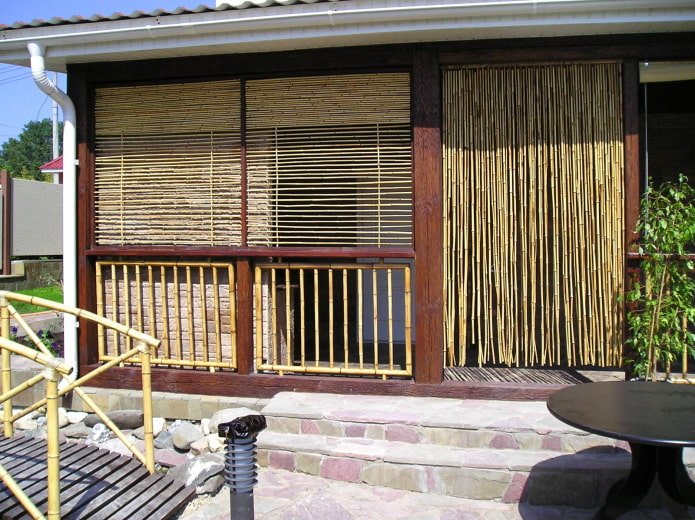
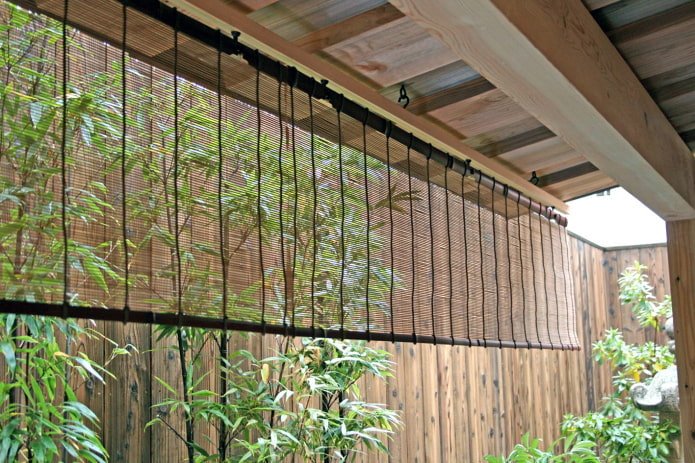
Landscaping
This method is suitable for those who want to create shade on the site and hide from the sun. You won’t be able to close the gazebo from wind and rain with the help of vines: in order for the living wall to protect from strong drafts, it is necessary to grow a dense shelter, which is not always possible.
Perennial maiden grapes (parthenocissus), unpretentious hops or ivy are suitable as a hedge. When planting, it is worth considering that these vines are aggressors: without pruning and control, they will fill a huge area.
Landscaping is relevant only in the summer months, which means it is not suitable for year-round use of gazebos and verandas. But greenery will help to fence off the building from the curious glances of neighbors in the country.
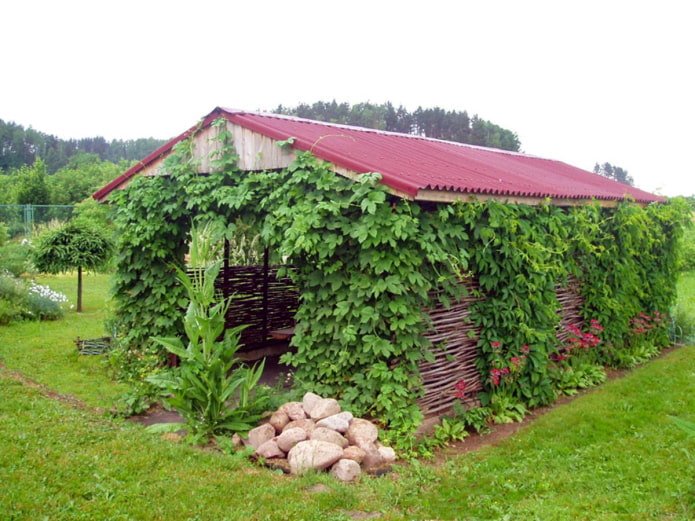
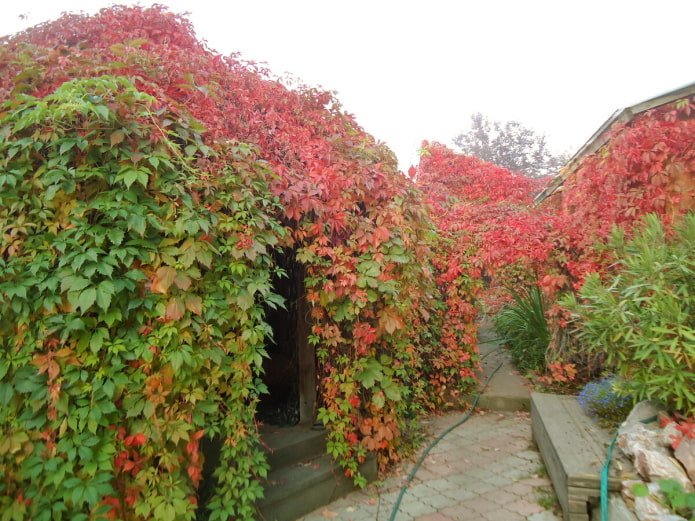
Decorative wooden lattice
A wooden mesh or trellis can be used to cover the upper part of the walls gazebos, but for a summer pergola, the option with a lower lattice is also suitable. You can sew up the gazebo with trellises yourself, buying them in a building materials store or making them yourself from thin slats.
The lattice will partially protect from the wind, give the structure strength and create a favorable atmosphere inside. Trellis are aesthetically pleasing, provide privacy and are a good support for climbing plants.
If you want to close the gazebo with a lattice, it will not take much time. But since the wooden trellis is located outside, it should be impregnated with protective compounds and varnished.
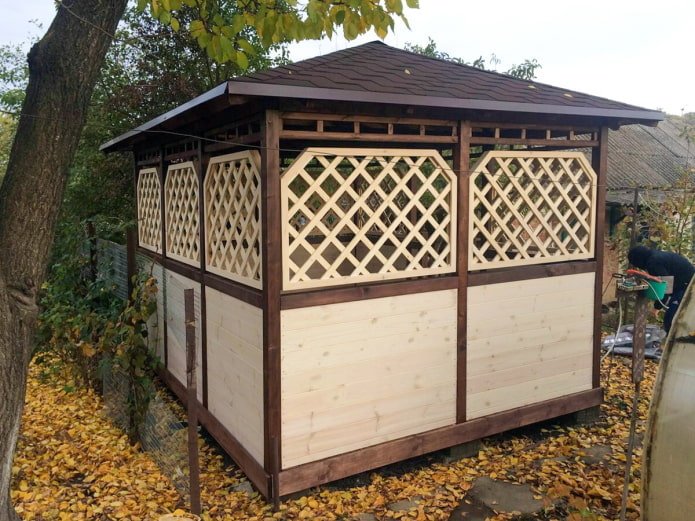
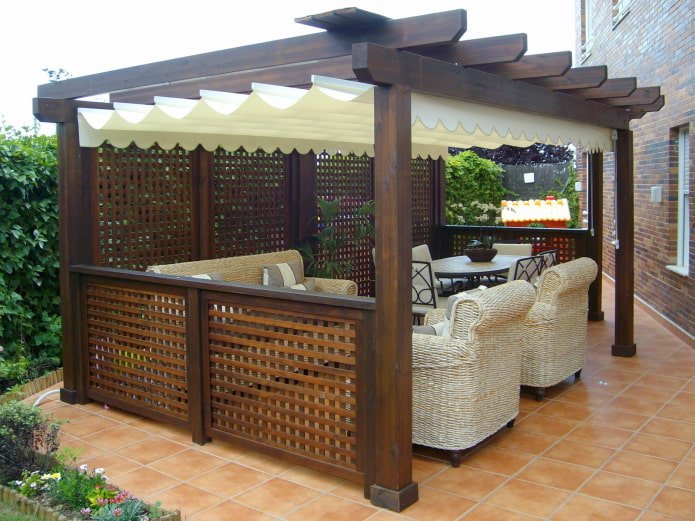
Polycarbonate cladding
With the help of polycarbonate, you can close not only openings in gazebo, but also to create a solid structure on a metal frame.
- This is a flexible and heat-resistant material that does not cause difficulties during installation and has a variety of colors.
- It is ideal for warm weather, but on sunny days it actively transmits ultraviolet light and creates a greenhouse effect.
- One of the main advantages of polycarbonate is its affordable price.
- And to independently close the gazebo from wind, snow and rain, you will not need complex additional equipment – ordinary carpentry tools will do.
A special protective film during installation should be on the outside, before installing the sheet it must be removed.
Polycarbonate allows you to seal the openings reliably enough so that neither wind nor snow penetrates into the building.
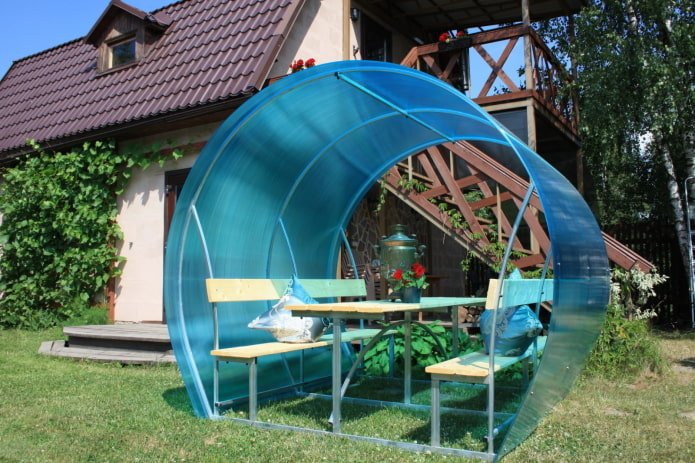
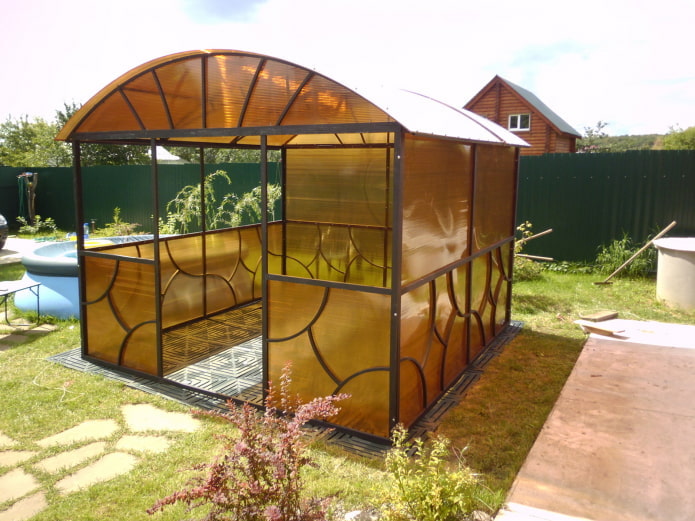
All the above methods of covering and protecting gazebos differ not only in appearance, but also in price. Before choosing one of them, you should decide on two factors: will the structure be used in the cold months and does the material fit into the landscape design of the site.
Now reading:
- 39 unique ideas for stylish decoration of a summer cottage well.
- Dark Kitchen: Inspiring Design Solutions and 33 Interior Photos
- Curtains for a compact bedroom: inspiring photos and design solutions
- 15 Creative Bathroom Decor Ideas and 45 Inspiring Photos.
- Country Style Bedroom: 40 Inspiring Photos and Design Tips